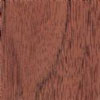American Walnut

| Wood type | Hardwood |
| Environmental | Not listed in CITES. Believed available from well-managed sources. Check certification status with suppliers. |
| Distribution | Black walnut is widely distributed throughout North America from south Ontario southward to Texas, and in the east from Maine to Florida, but it is not plentiful, firstly because its growth is scattered, and secondly, because of the clearing of ground for cultivation and the demands for the timber have exhausted the supply in many areas. |
| The Tree | Under favourable conditions, the tree attains a height of 30m and a diameter of 1.5m or more, the bole often being clear for 15m to 18m. |
| The Timber | The sapwood is usually narrow, and pale brown in colour, the heartwood varying in colour from rich chocolate-brown to a purplish-black. The wood has a fine even texture and a rather coarse grain, and weighs about 660 kg/m3 when dried. |
| Drying | Dries rather slowly with a tendency to honeycombing. |
| Strength | The strength of African mahogany compares favourably with that of American mahogany (Swietenia), but is more resistant to splitting. No data is available regarding strength of heavy mahogany although it can be assumed the heavier species are stronger than African mahogany. |
| Working Qualities | Good – Good |
| Durability | Moderately durable |
| Treatability | Extremely difficult |
| Moisture Movement |
Medium ** |
| Density (mean, Kg/m³) |
660 |
| Texture | Coarse |
| Availability | Variable |
| Price | Medium to high |
| Use(s) | Sports goods, Furniture |
| Colour(s) | Dark brown/black (rich dark brown) |
